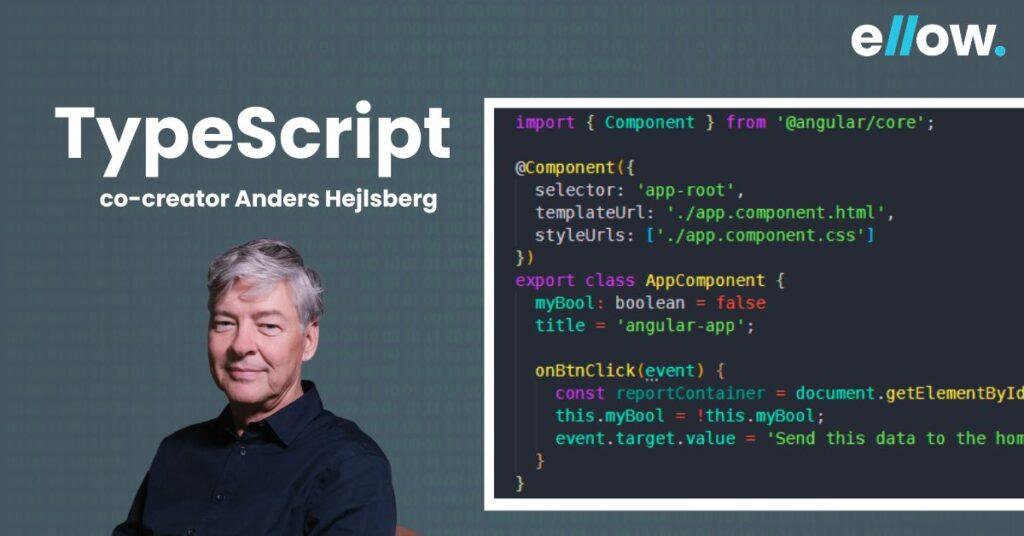
Blog
Typescript vs Javascript: A Comparison Guide

Hello there! Welcome, to our guide on TypeScript and JavaScript. If you’ve been wondering which language to choose for your project or are simply interested in understanding the similarities and differences between them then you’re in the place!
Throughout this guide, we’ll delve into the intricacies of TypeScript and JavaScript. We’ll explore their features highlight their strengths acknowledge their limitations and cover a range of topics including their type systems learning curves optimal usage scenarios and performance capabilities.
Whether you’re a programmer a newcomer navigating the coding realm or somewhere in between this guide has got you covered. We aim to provide you with a comprehension of TypeScript and JavaScript.
By the time you reach the end you’ll be equipped with the knowledge to make a decision, about which language best suits your requirements.
Table of Contents
What is TypeScript?

TypeScript is a superset of JavaScript, a programming language developed and maintained by Microsoft that enhances JavaScript by introducing types, classes, and modules. TypeScript aims to make the development of large-scale applications more manageable and efficient.
In the published 2023 Stack Overflow Developer Survey TypeScript emerged as the most popular programming language, among professional developers with approximately 34.9% utilizing it in their projects.
Furthermore, the survey revealed that TypeScript ranked as the beloved language as an impressive 67.1% of developers expressed their enthusiasm to continue working with it in future developments.
Companies Using TypeScript
- Microsoft: As the creator of TypeScript, Microsoft uses it extensively in its applications. Visual Studio Code, a popular code editor developed by Microsoft, is written in TypeScript.
- Google: Google uses TypeScript in Angular, one of its flagship web development frameworks. Angular is developed and maintained by Google and is widely used for building large-scale web applications.
- Slack: Slack uses TypeScript for its desktop client. The adoption of TypeScript has helped Slack improve the reliability and stability of its desktop application.
- Airbnb: Airbnb has migrated its codebase to TypeScript to take advantage of static typing and better tooling, improving the developer experience and code quality.
What is JavaScript?

JavaScript, commonly known as JS is a programming language that plays a role, in creating and improving web pages. It functions alongside HTML and CSS as one of the technologies of the World Wide Web. By enabling interactive elements on web pages JavaScript has become indispensable for developing web applications.
As per the same Stack Overflow survey, JavaScript continues to hold its position as the utilized programming language for the ninth consecutive year. A significant 69.7% of developers rely on JavaScript.
Its versatility and widespread use have made it a preferred choice for leading tech giants such, as Google, Facebook, Netflix and Microsoft.
Companies Using JavaScript
- Google: Google uses JavaScript extensively in its products. For instance, Gmail, Google Maps, and Google Docs all rely heavily on JavaScript for their interactive features. Google has also developed and maintains AngularJS, a popular JavaScript framework for building web applications.
- Facebook: Facebook’s user interface is built with JavaScript, using the React library, which was also developed and is maintained by Facebook. Instagram, owned by Facebook, also uses React for its web interface.
- Netflix: Netflix uses JavaScript on both its client and server sides. On the client side, it uses React to build its front end user interface. On the server side, it uses Node.js, a JavaScript runtime, to handle back end requests.
| JavaScript | TypeScript | |
|---|---|---|
| Type System | Uses dynamic typing, which means variable types are checked during runtime. | Introduces static typing, which allows type checking during compile time. This can help catch potential errors before the code is run. |
| Classes and Modules | Supports classes and modules, but they were only introduced in ES6, and older browsers may not support them. | Supports classes and modules as part of its core syntax, and it compiles them down to ES5 or ES3 JavaScript for compatibility with older browsers. |
| Interfaces | Doesn't have a built-in concept of interfaces. | Introduces interfaces, which allow you to define the shape of an object, enhancing code readability and maintainability. |
| Learning Curve | Has a lower learning curve due to its simpler syntax and dynamic nature. | Has a steeper learning curve due to its static typing and stricter syntax. |
| Use Cases | Ideal for small to medium-sized projects and client-side web development. | Better suited for large-scale application development. |
| Runtime Performance | Performance is standard across all browsers as it is the language that browsers interpret natively. | Runtime performance is identical to JavaScript's, as TypeScript compiles down to JavaScript. |
| Development Performance | Slower development cycles for large projects due to lack of type safety and less powerful tooling. | Faster development cycles for large projects due to its static typing and powerful tooling. |
| Tooling | Has good tooling support, but it can't provide features like accurate autocompletion and refactoring due to its dynamic nature. | Static typing allows for excellent tooling support, including autocompletion, type inference, and advanced refactoring capabilities. |
Code Examples of Typescript vs Javascript
let’s take a look at a simple code example in both JavaScript and TypeScript to illustrate some of the differences.
JavaScript
function addNumbers(a, b) {
return a + b;
}
let sum = addNumbers(10, 20);
console.log(sum); // Outputs: 30
In this JavaScript example, we define a function addNumbers that takes two parameters, a and b and returns their sum. We then call this function with two numbers and log the result.
TypeScript
function addNumbers(a: number, b: number): number {
return a + b;
}
let sum = addNumbers(10, 20);
console.log(sum); // Outputs: 30
In the TypeScript version, we add type annotations to the function parameters and the function return value. This means that if we try to call addNumbers with non-number arguments, or if we try to make the function return a non-number, the TypeScript compiler will throw an error.
TypeScript’s static typing. This feature can help catch potential errors before the code is run, improving code quality and developer productivity.
Performance Comparison
Performance is a major factor when choosing a programming language. So, how do TypeScript and JavaScript stack up?
Runtime Performance: A Tie Game
In terms of runtime performance, there’s no clear winner between TypeScript and JavaScript. Since TypeScript compiles down to JavaScript, the runtime performance of the two languages is virtually identical.
Development Performance: TypeScript’s Edge
However, when it comes to development performance, TypeScript has an edge. It’s static typing and powerful tooling can lead to faster development cycles, especially for large-scale applications.
Why Migrate Your Project to TypeScript?

Migrating your project to TypeScript can offer several advantages, especially for larger, more complex applications. Here are some compelling reasons to consider the switch:
Improved Code Quality
TypeScript’s static typing can significantly improve code quality. It allows for compile-time error checking, which can catch potential bugs before the code is run. This feature is particularly useful in large codebases where it’s easy for errors to slip through.
Enhanced Tooling
It offers powerful tools and excellent editor support, including autocompletion, type inference, and advanced refactoring capabilities. These features can speed up the development process and make it easier to navigate and understand large code bases.
Better Collaboration
In a team setting, TypeScript’s static typing can make collaboration easier. Types serve as self-documenting code, making it easier for developers to understand what a function does, what arguments it expects, and what it returns. This clarity can reduce the time spent onboarding new team members or switching between projects.
Future JavaScript Features Now
TypeScript supports new and proposed JavaScript features, like optional chaining and nullish coalescing. You can use these features in TypeScript today, and they’ll be compiled to ES5 or ES6 JavaScript for compatibility with current browsers.
Safer Refactoring
Refactoring can be a risky process in a dynamically typed language like JavaScript. With TypeScript, the compiler can alert you to the parts of your code affected by a refactor, making the process safer and more efficient.
Interoperability
TypeScript is a superset of JavaScript, meaning any valid JavaScript code is also valid TypeScript code. This feature allows for incremental adoption—you can migrate your project to TypeScript gradually, one file at a time.
In conclusion, while migrating to TypeScript requires an investment in time and learning, the benefits in terms of code quality, developer productivity, and maintainability can be well worth it, especially for larger projects.
Final thoughts
The debate, between TypeScript and JavaScript does not have an answer that fits all scenarios. Each language has its advantages. Is appropriate for specific types of projects. JavaScripts straightforwardness and adaptability make it an excellent option for beginners and smaller scale projects.
On the hand, TypeScripts static typing and sophisticated functionalities make it exceptionally powerful, for applications. Ultimately deciding between TypeScript and JavaScript relies on the requirements of your project.
Hire TypeScript and JavaScript Experts Today
If you’re interested in hiring JavaScript and TypeScript professionals, reach out to ellow today. We provide access to thousands of TypeScript and JavaScript programmers. All of our talent have been rigorously pre-vetted for technical and soft skills.
Frequently Asked Questions
“Better” is subjective and depends on the context. TypeScript offers static typing and other advanced features, making it a great choice for large-scale applications. However, JavaScript’s simplicity and flexibility make it ideal for smaller projects and beginners.
No, TypeScript cannot replace JavaScript. TypeScript is a superset of JavaScript, meaning it adds new features to the JavaScript language but still compiles down to JavaScript.
Yes, TypeScript can be harder to learn than JavaScript due to its static typing and stricter syntax. However, these features can also make TypeScript easier to use in large-scale application development.
Yes, you can use JavaScript libraries in TypeScript. However, you may need to use type definitions to take full advantage of TypeScript’s features.
Suvankar Das
Suvankar Das
Recent posts


Why Startups Are Switching to On-Demand Tech Talent






